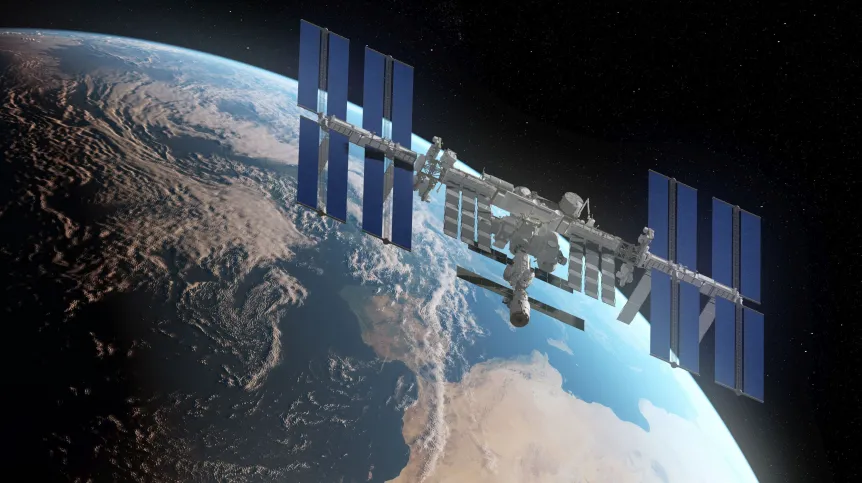
Members of the second private mission to the International Space Station, which reached the ISS last week, will conduct research and test new technologies in low Earth orbit. They will use brain activity testing equipment supplied by a Polish neurotechnology company.
The second private mission to the ISS launched on the night of May 21. As part of this mission, astronauts from Axiom Space (Houston, USA), a space company cooperating with NASA, will conduct research and test new technologies in low Earth orbit.
The research planned for the Ax-2 mission was selected in cooperation with international centres such as Stanford University and MIT. One of the studies will involve the use of functional near-infrared spectroscopy (fNIRS) for mobile recording of astronauts' brain activity during space flight.
Part of the Ax-2 mission is the science project Nebula, which aims to study the physiological responses of the body to space flight, and especially to microgravity conditions. The project includes the study of blood flow to the brain, its electrical activity, assessment of intracranial hypertension through non-invasive examination of the eye pupil, and monitoring changes in the optic nerve. These studies are important in the context of the future long-term human stay in space and the development of new, non-invasive methods of body monitoring.
During the mission, the researchers will use equipment for testing brain activity - the fNIRS 'Photon Cap' wireless system adapted to the conditions of space flights, developed by the Polish neurotechnology company Cortivision.
According to their press release: ‘During their training on Earth, the astronauts performed experimental tasks that will then be repeated during the flight at two time points of the mission. After returning to Earth, the astronauts will again take part in fNIRS measurements. As a result, it will be possible to compare how patterns of brain activity change depending on the environment and conditions, including weightlessness.’
Functional near-infrared spectroscopy (fNIRS) is a non-invasive neuroimaging technique that measures changes in the concentration of oxygenated and deoxygenated haemoglobin in the cerebral cortex.
The press release said: ’fNIRS is safe, portable and relatively resistant to electromagnetic interference and motion artefacts, which is why it is often considered a promising technology for use in extreme environmental conditions such as space flight. With fNIRS, researchers can potentially monitor changes in neural activity in astronauts' brains, which may help to better understand the impact of space flight on cognitive and neurological function.’
Further, new applications of this technology depend on the results of the first fNIRS measurements during space flight. According to the Polish company, fNIRS can be used to study the brain activity of astronauts during tasks critical to space flight, where long-term focus and selection of information are crucial. Scientists can also use fNIRS to design better training of attention skills and prepare astronauts for work in extreme conditions.
Potentially, the training conclusions can also be applied to other professions where focus and maintaining mindfulness are particularly important. fNIRS can also be used to study the effects of isolation, confinement and other psychosocial stressors that astronauts may experience during long missions. fNIRS is one of the few technologies that could be used to monitor changes in brain physiology during planned expeditions to Mars.
The Falcon 9 rocket with the Dragon capsule, built by Elon Musk's SpaceX, took off from the Kennedy Space Center Kennedy at Cape Canaveral, Florida, at 17.40 local time (23.40 Polish time). The mission has been designated Ax-2 and its private participants will pay several million dollars for the flight and stay on the ISS. The four astronauts reached the ISS last Monday. (PAP)
zan/ agt/ kap/
tr. RL













